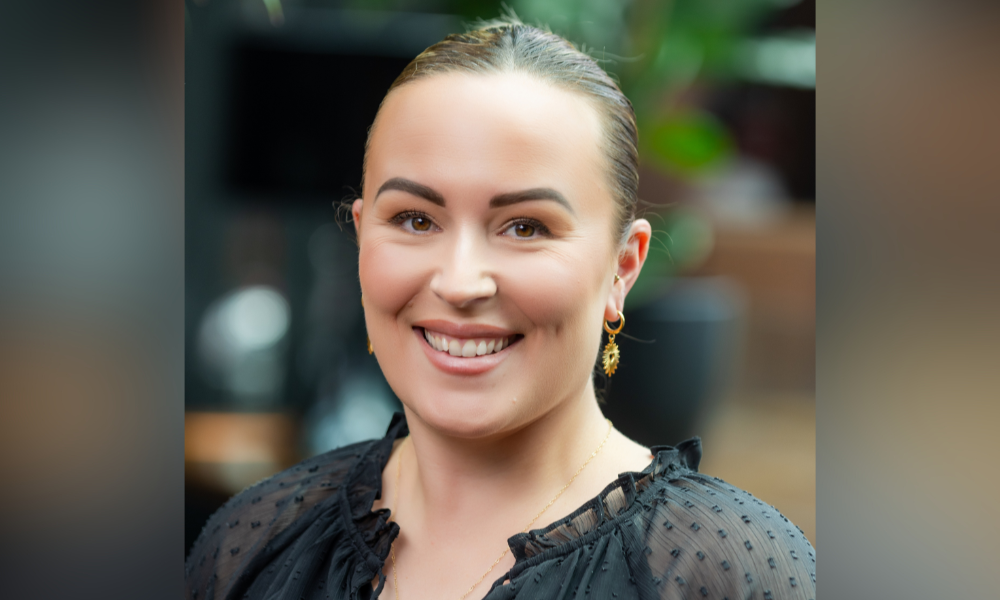Up against the banking behemoths, Australia's second-tier lenders reckon they take first place in innovation, flexibility and broker dedication

When MPA gathered five of Australia’s leading non-major banks and two prominent mortgage brokers around the table to discuss the topics of the day, a lot of emphasis was put on the competitive advantages they bring to the hotly competitive Australian banking sector.
The non-major banks – comprising the second tier of lenders below the big four and Macquarie – have the unenviable task of competing for market share against the bottomless budgets and unrivalled brand power of the likes of Commonwealth Bank and NAB.
Yet it’s this precise drawback that in some ways becomes their biggest advantage. It creates an atmosphere of innovation and razor-sharp focus on customer outcomes while maintaining the flexibility in lending options that can be lacking among the majors.
All roundtable participants spoke of distinct ways of maintaining their competitive advantages, but a common theme wove through all responses over the course of an hour – there is no success in the challenger banking sector without brokers.
One need not conduct a roundtable to reach this conclusion, for the numbers speak for themselves. Whether we look at ING (represented here by head of mortgages George Thompson), AMP (represented by head of lending and everyday banking distribution Paul Herbert) or Bankwest (represented by Ian Rakhit, general manager, homebuying distribution), brokers typically account for more than 90% of volume at the non-major banks.
At a time when broker dominance in the home loan market is creeping towards 80%, clearly they are well ahead of the already steep curve.
The lines can blur, of course. ANZ’s recent acquisition of Suncorp Bank (represented by Paul Brick, head of broker partnerships) speaks to the sizeable appetite for M&A in the banking industry, which was particularly prevalent in MPA’s customer-owned banks roundtable in March.
BOQ Group (represented by head of broker operations Simon Elwig) also closed the not-insignificant acquisition of ME Bank – which now operates as BOQ Group’s broker brand – a few short years ago.
Nonetheless, these institutions remain a crucial ingredient in sustaining diversity of choice for customers. Here’s what they had to say.
Q. The broker channel could comprise up to 80% of the mortgage market by year's end. Is the interminable rise of broker dominance more pronounced among the non-majors such as yourselves, and if so, why?
As mentioned above, yes, broker dominance is substantially more pronounced among the non-major banks. Now to the why.
AMP’s Paul Herbert described the fact as “a testament to the opportunity that brokers provide for customer choice”. He discussed how brokers fuel competition by tabling options from smaller banks that may offer superior solutions for customers, even though they “don’t have the marketing budgets of the larger banks to promote these solutions”.
That competitive edge, Herbert argued, is tied to agility. “As a smaller bank we are also able to listen to and implement broker feedback swiftly. We’re more geared to brokers and therefore more responsive and adaptive in developing solutions which meet their needs. The new loan-origination platform we’re building is an example of that.”
In contrast, Herbert noted how larger organisations like the big four can be hamstrung by significant barriers to enacting change. “It can take years, even decades, to steer such a large ship in a new direction.”

Bankwest’s Ian Rakhit (pictured above) echoed this sentiment while highlighting the impact of the best interests duty. “Maybe at the time the industry was a bit concerned about what BID would do,” he said. “But I think it's been a really strong drawcard for the broker industry.”
According to Rakhit, BID has elevated public trust in brokers by reinforcing their obligation to act in the best interests of clients. For non-major lenders, this trust translates into greater access to customers, especially in demographics they might not traditionally reach.
“Brokers are great for distributing products for a bank of our size,” Rakhit said. “The ability to distribute through 20,000 small business operators gives you access to customers that you may not have seen before, may give you certain niches that you can look at or certain demographics or segments that you can look at … brokers are the greatest feedback machine.”
George Thompson (pictured below) at ING honed in on speed and cost efficiency, two areas where he sees non-majors making significant strides. “Speed is obviously paramount,” he said. “I think collectively as an industry we're all investing around improving the broker experience. We're aligning our operating models specifically towards the broker channel, which enables us to assess loans more quickly, and we’re seeing results.”

For Thompson, the broker channel is more than just an efficient distribution method; it’s a structural advantage. Without the burden of a large branch network, non-majors can scale efficiently and pass on cost savings to customers in the form of better rates. “We’re able to try and double market share without the need for those increases in branches,” he said. “In turn, we can deliver a more competitive price, which is what we’re known for in this market.”
BOQ Group’s Simon Elwig said, “The majors have the size and scale advantage, so obviously we’re going to go through the broker market.” That’s not to mention their brand and marketing advantage, too. “You need a broker to explain the benefits of ME Bank so we can get to the customer; otherwise, they will just go to the majors. That's why the broker market is so important for us to grow.”

Highlighting the key findings of the recent Value of Mortgage and Finance Broking report, jointly written by Deloitte and the MFAA, AMP’s Paul Brick (pictured above) said it “identified that brokers give their customers greater access and facilitate consideration of non-major banks to meet their lending needs”. He added: “Non-majors can choose to offer a simpler proposition to the broker market, choosing which segments to specialise in and therefore being able to deliver incredibly strongly in those chosen areas.”
Collectively, these insights painted a clear picture – the growth of the broker channel is not just a market shift; it’s a strategic advantage that non-majors are increasingly harnessing.
Q. What can the non-majors offer borrowers that they can’t get from the big four?
Certainty of outcome, competitive rates, a targeted approach and less channel conflict. These are just a few of the competitive advantages cited by roundtable participants.
A faster time to yes and simpler application and assessment processes “is certainly the approach Suncorp Bank has taken with our Sunlight proposition”, said Brick. He highlighted that Suncorp Bank has seen consistent times to decision of less than one day over the past three months and an application-to-approval conversion rate of almost 95%.
“Our BDMs can often get a lot more involved in applications, and all our assessors are Australian based, ensuring they’re available when brokers need them,” Brick added.
The point about BDMs resonated with Elwig, who suggested they are more approachable at the non-majors “because with the larger lenders, they might have so much volume coming through that it becomes harder for them”.
As for the rates piece, Elwig said: “When you look at the top of who’s the most competitive on rates, you'll find that the non-majors are up there as the most competitive, and maybe you’ll get the odd major coming in once in a while, because competition keeps the majors honest.”
Noting that AMP loans are 95% broker-sourced, Herbert called the broker channel “our channel of choice … we’ve built the bank around delivery through brokers. We see the broker as a champion and advocate for our business, so we build systems and processes to support them”.
While Herbert conceded that non-majors “can’t be all things to all people”, he touted this as a distinct advantage. “We’re very clear on the segments where we can add value, for example wealth accumulators, investment property owners, or customers who work with financial planners and are able to use debt recycling. We develop strong product pricing policies that are aligned to these areas.”
Rakhit said, “I can only speak for Bankwest, but as a digital bank we have a laser focus on investing in the broker channel and delivering the best experience for brokers across the country.” He pointed to Bankwest’s ‘Built By Brokers’ program – which is in the process of adding a biometric and in-app onboarding process – as a testament to this fact.
“We understand the importance of building trust with our brokers, and we’re committed to demonstrating this trust through transparency and by consistently offering our best deals,” added Rakhit.
For Thompson, brokers’ steady rise towards 80% of the home loan market is all about trust. “Trust that at one end of this is a human being going into what is one of the biggest financial transactions of their life, and they’ve got someone who’s firmly in their corner. And by virtue of the best interest duty, brokers are there to support them through that kind of transaction.”
Thompson said there is “something incredibly simplistic and powerful about us being very focused on the broker channel, aligning everything we do around that, whether it’s how we sell, how we set up ourselves up, or how BDMs, credit assessors and technology come together to keep improving the experience all the time”.
All the talk of BDM support provided a perfect segue into the first broker question of the day, from Jessica Pringle of Sydney-based Pringle Finance Group.
Q. Can brokers still expect on-ground BDM support despite ever-growing upgrades in technology? There is nothing better than face-to-face contact with a knowledgeable BDM, and I don't want that to disappear.
Pringle (pictured below) ’s sharp question provided probably the most kinetic conversation of the day. It got to the core of one of the biggest issues facing not just the mortgage finance industry but every customer-facing sector across the world.
Will the human touch survive the rise of artificial intelligence? According to roundtable responses, definitely, not maybe – yes.

The roundtable’s other broker guest, Mortgage Choice franchise owner Leanne Johnstone (pictured below), was equally eager to hear what the lenders had to say for themselves. “I absolutely agree with Jess … that the BDM support is absolutely integral. We need to be able to rely on people because we’re often dealing with lots and lots of different lenders,” she stated.

Thompson said he has a “deep philosophy” on the matter: the more you invest in AI and automation, “the more important it becomes that your sales and credit assessment team are knowledgeable and empowered”.
They become “the guardians of the policy”, said Thompson, “able to take people away from manual, low-value tasks to become strategic partners to the broader business”.
This will allow BDMs to get out there and engage dormant brokers on ING’s book, which, Pringle pointed out, “could be dormant to you but not dormant to another lender”.
Rakhit said that, while Bankwest has an ambition to be Australia’s favourite digital bank, “we also have an equally ambitious goal to be Australia's best bank for brokers, which includes a key focus on human-to-human support when needed, through our unique case management model, devoted BDMs and our Australia-based contact centre”.
While every broker at Bankwest gets a BDM, Rakhit agreed that having 50 BDMs for 20,000 accredited brokers is a tall order, “so we make sure that we’ve got all the support underneath that”.
BDM support is “absolutely imperative” for AMP, but Herbert conceded that “it’s a difficult balance for many lenders to get this right”.
“Tech is an important enabler for efficiency,” he said, “but nothing beats human relationships and quality support. Where our BDMs really prioritise their time, energy and effort is [in] the high-value, high-importance tasks. And to do this effectively they need to have a really good understanding of policy and process. So we invest in training in this area.”
Brick stressed that mortgage finance “is fundamentally a people business, and I think brokers understand that intuitively and have therefore driven their success by having strong relationships with their customers, with their referral partners and with their lender partners”.
For Suncorp Bank’s part, Brick said: “We value that relationship, and so we have no intention of changing that. It’s critical for banks to have the right people supported by the right technology, policies and processes.
“Any consideration of new technologies or initiatives is made through that lens. This will support our people by creating capacity for them to better support our brokers and their customers.”
In Elwig’s view, “I don’t think a non-major can grow without BDM support. If a customer doesn’t know about you, they’re not going to come asking for you. And if all you’re doing is bombarding them with emails, the broker is not going to read it and you’re not going to get any volume.”
Lenders risk losing business without a robust BDM network, noted Elwig. “The most important part I've seen in all our research is timeliness and responsiveness of a BDM to get back to you. Because if they don’t answer a scenario straight away, you’re on to the next bank.”
Q. From prime to near prime, asset finance to commercial, where do you think brokers can capture more market share going forward, and how do you think they can achieve that?
Unsurprisingly, there was a great deal of discussion around the topic of diversification during the roundtable.
Buzzword or not, there is no doubt that, to keep their clients satisfied, brokers are increasingly expected to wear more than just the home loan hat. How they go about doing it is another question entirely.
For Elwig, diversifying into commercial finance presents a lot of opportunities for brokers, but there are some fundamental caveats to consider. “To get into commercial is not as easy,” he said. “You need to learn about it. You need to upskill yourself if you're not a commercial writer. It also helps if you learn commercial for the self-employed. But I think if you are going to do that, you need to educate yourself.”
Elwig (pictured below) recommended looking into courses offered by the Commercial & Asset Finance Brokers Association. “Plus, you also need a good mentor to help you through it,” he added.

Brick raised the point that brokers are consistently growing market share, not just in home lending but commercial and equipment finance too.
“Customers have a diverse set of lending needs, and brokers are well positioned to assist in all aspects,” said Brick. “Diversification is therefore a good way to assist their customers with more of their needs and to help build a more sustainable brokerage.
“We have seen this work best when business owners either form a strategic partnership with a specialist firm or they bring brokers with specialist expertise into their business. Our Suncorp Bank Business Banking BDMs assist brokers with introductions to our business bankers across Australia.”
Thompson highlighted one market that’s often overlooked: sustainable lending. ING, he said, is “looking to be the first and lead in sustainable lending, particularly capturing the retrofitting opportunity”.
He added: “It’s fundamentally important that we enable Australians to future-proof their homes and are more sustainable, which in turn will cut emissions. It’s a real niche that brokers can step up and own.”
The conversation took a swerve when Rakhit chimed in, stating: “Whilst respecting what everybody else has said, I don't think it's right for me to say what I think brokers should do, to be fair, especially because at Bankwest, if anything we've narrowed our focus. We don't do business lending, we don't do commercial lending, so I don't think it's appropriate for me to say what brokers should do.”
In Rakhit’s more-than-fair view, it should up to the broker to decide if and how they diversify their offering. “If brokers want to specialise in home lending, fantastic; if brokers want to specialise in commercial lending, fantastic,” he said. “I think it's the approach that the broker wants to take to how they service their market, whether they want to specialise or diversify.
“I think it's up to brokers and head groups [to] decide where they see the next market. I don't think it's up to banks to decide.”
Herbert’s response to the question implied that the term ‘diversification’ slightly misses the point. For businesses that want to become generational, he believes it’s more important to figure out how to achieve that goal. While diversification could be a part of that, “many businesses have been built successfully over the years by being really clear who their target markets are and trying not to be everything to everyone”, he pointed out.
He added that AMP is seeing more sophisticated brokers “leveraging their balance sheet size and scale and focusing their attention on ‘how do I retain my top talent in the business so it continues to grow even if I'm not in the seat running day to day’”.
Q. What role do you see brokers playing in your growth in 2025?
That was the question posed by broker guest Leanne Johnstone. It offered panellists the chance to recap how tightly linked the challenger banking sector is to the third party channel. Unsurprisingly, roundtable participants stressed the critical role brokers play in their success.
Bankwest, explained Rakhit, works hand in hand with brokers to determine how and where to grow the lender’s business. “Brokers are phenomenal at identifying areas where they can do more business with you – whether it's target markets, pricing, or policy changes.
“It’s a wonderful bellwether of how we can grow. So, we expect to grow, and I'm very open to how we achieve that. Whether it's by working more with our existing supporters or brand-new supporters, it doesn't matter to me where the growth comes from, as long as we're meeting market needs.”
AMP, for the record, has a stated ambition of capturing an 11% market share of broker flow. “To get that, we’re going to have to find two or three additional customer segments or niches that we can grow in,” said Rakhit.
Brick said that at Suncorp Bank, “brokers remain absolutely critical to our success … and we are looking to deepen and broaden our broker relationships in 2025 to ensure we are able to continue to grow sustainably”.
Elwig, meanwhile, revealed that BOQ Group is planning to introduce a new platform later this year to make it “simpler and easier to do business with us”.
“We’re also equipping our BDMs so they can get out there to build and deepen our relationships with more brokers to attract more volume,” he added.
Thompson didn’t mince his words in his reply. “There’s no plan, no expansion without [brokers]. The entire thing is predicated on the whole broker network, and for ING the success of the brokers goes hand in hand with our success and any expansion plans that we have for our market share.
“We have effectively placed the broker at the centre of everything we do.”
Q. Do you think the 3% serviceability buffer is fit for purpose in 2025, and will reducing it help to kick-start demand-side buying activity?
Serviceability is a contentious issue in mortgage finance. Brokers, borrowers and lenders universally agree that it’s an important mechanism that’s effectively kept default rates reasonably low.
Current regulatory standards stipulate that lenders should assess a borrower's ability to repay their loan at an interest rate 3% higher than the current loan rate, ensuring borrowers can manage potential future interest rate increases.
APRA has held the buffer at 3% since October 2021, when it was raised from 2.5%. Although the MFAA has recently called on APRA to reduce it, lenders around this table were more cautious.
“I think that the regulatory environment we’re currently operating in is appropriate in terms of buffers, and I can’t see changes any time soon,” said Herbert (pictured below). “Rates go up and down, and over a long period of time we’ve seen that the relative stability of our economy has meant that even in periods of high rates, arrears have remained low.”
Agreeing, Rakhit said: “We have seen very low rates of arrears in Australia despite 13 rate rises; some would argue that’s because the buffer helped ensure that people didn’t overcommit.”

Rakhit raised a valid point that there is as much, if not more, of a problem on the supply side of the equation. “I think there's enough people who want to buy a property, but is there enough property to purchase? That's where I would say this is perhaps where more intervention is required.”
Thompson said, “It's important to reflect on the buffer and what its purpose is, that being setting the benchmark effectively for affordability.” First and foremost, it’s there to protect the customer, he pointed out, as well as the banks and the broader financial system. “I don't think that should or could be underestimated.”
The serviceability buffer “certainly remains important”, said Brick, although he pointed out that the Senate Economics References Committee recommended reassessing the current 3% level last November. “If adopted, we may consider a change to the buffer in line with new APRA guidelines.”
Elwig took umbrage at the word ‘kick-start’, “because the value of new lending commitment is approaching record highs”.
“The 3% serviceability buffer that APRA applies to banks can be restrictive, but changes to the requirement may not necessarily yield greater opportunity for homeowners entering the market,” he warned.
Like other panellists, Elwig called supply “one of the most challenging factors to get right to meet the demands and opportunities of homeownership”.
Q. What exciting new technologies are coming to the broker channel in the year ahead?
“This is something I'm really excited to talk about,” said Herbert. “We've been working with a large group of brokers and a number of suppliers to recreate what a great origination process could look like.”
He expressed frustration with the amount of “duplication of effort” prevalent in the application process, as brokers, aggregators and banks find themselves repeating tasks that shouldn’t have to be repeated. “So in the middle of this year we’ll be launching a brand-new origination platform. It will include the very latest technology to simplify and speed up the origination process and fundamentally change how brokers work with AMP Bank.”
Thompson said he was “impressed” with what AI is enabling around business efficiency and productivity. “I think the rollout for brokers is going to be unbelievable when you can effectively have a customer, put those details through a system and then be able to review credit policies that exist in the market, any deals that have written through that aggregator network, then you can come back with a very clear view of where that deal can be lodged.
“That could be a complete game changer for a lot of players, and just time saved for many people.”
Rakhit discussed how Bankwest’s third party team is investing in solutions to make the application process as simple as possible for brokers. He highlighted that investing in tech is essential if a non-major bank wants to remain competitive against the big league.
“Given the big four and Macquarie are improving almost every six months, the bar is getting raised, so we need to make sure at Bankwest we’re also raising the bar, so lots of work on time to approval largely by using data, not documents,” said Rakhit.
BOQ Group, said Elwig, has been on a “comprehensive digital transformation journey, and as part of that we will be rolling out a new digital platform to brokers this year”. The benefits of this rollout will be “faster time to yes … competitive pricing and a simplified product range, to products packed with features and flexibility of up to 10 offsets, and there will also be more real-time communication on our portal”.
Brick explained how Suncorp Bank has invested heavily in tech over the past 18 months in response to broker feedback. Looking ahead, he said, “we are focused on listening to brokers [through formal market research and informal feedback] on what’s needed to help ensure we sustain that simplicity and ease.
“As a member of the ANZ family, we are also looking at ways in which we can leverage areas of best practice to build on the Suncorp Bank proposition.”



